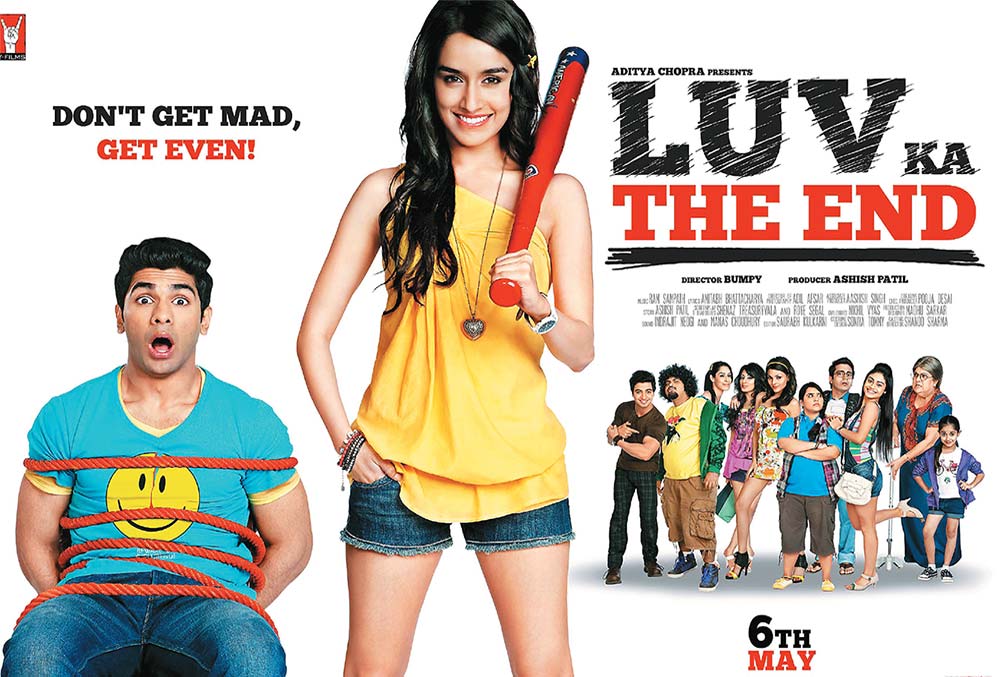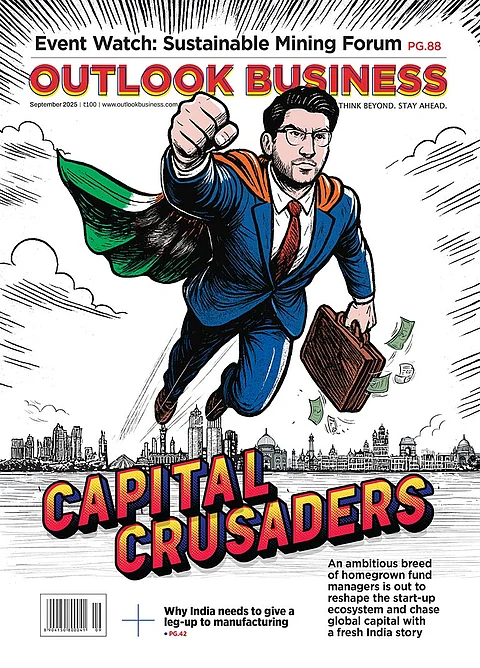In August last year, a motley 80-strong group of 16-32 year olds from all over India quietly made their way into the sprawling Yash Raj Films’ office in Mumbai. They were in the maximum city to have some fun and watch a movie. The group was evenly divided into men and women (or, well, boys and girls) and they were all quite thrilled to bits—they had been exclusively picked to give their opinion on a film that hadn’t been released or even privately screened yet.
This secret project, a film called Mujhse Fraaandship Karoge released two-and-a-half months later, was a romantic story with a modern ‘Facebook feel’ — the young visitors were previewing a rough cut of it for the crucially important exercise of gauging audience response to the film’s theme, dialogue and humour. The idea was simple. A red light would blink every 10 minutes and the audience, broken into four groups of 20 people each, would write its feedback down on a questionnaire handed out in advance. The answers influenced the way the movie turned out. Someone said Prabal Panjabi, a supporting star, was quite important and hence he was given more visible position in the promos. “We eventually had to move a song from the credit titles to the film’s climax,” adds Ashish Patil, business and creative head, Y-Films, Yash Raj Films’ new division that makes films specially for a young audience. Every film under the Y-Films banner not only has new stars but fresh faces across the board, whether lyricists, cameramen or editors.
Forever young
The entertainment industry segments its audience in a manner that would do the smartest marketing minds proud. Yes, there’s the clichéd truth that it’s mostly young people who go to the movies, listen to music and watch live bands — Patil, for example, points out that 82% of films released in India are watched by the 15-35 age group. “The interesting thing is that there is no segmentation in films, unlike television channels, and that’s a big opportunity,” he says. “For us, the youth segment is not niche but a ‘mass niche’.” The blue chip production house has broken the audience into core, primary and secondary viewers, all of them in the 15-34 age group across 40-50 cities of the country. Y-Films has had two releases so far (the first was Luv ka The End) — neither was a blockbuster but both recovered their modest ₹5 crore budget quite easily.
It has proved to be an infectious trend. Early last year, Viacom 18 launched Tipping Point Films to focus on concept films for urban youth while Balaji Telefilms launched ALT Entertainment to cater to young audiences — its Love, Sex aur Dhoka collected ₹7 crore on a ₹1.5 crore budget.
Lessons from a rage
Another huge if inadvertent success that points to the power of young audiences has been the Kolaveri Di track, which debuted as a low-key music video release in November last year, had over 3.5 million views in its first week, was downloaded as a ringtone over two lakh times in less than three weeks, and went on to become the first Tamil song to be premiered on MTV India. To date, Kolaveri Di’s music video has had a mind-boggling 57 million views on YouTube, over 3 million ringtones and caller ring back tones, has acquired versions in most Indian languages, not to mention a fan base in Pakistan and Bangladesh, and even the distinction of being turned into a Sharad Pawar parody.
But that’s not the only music that the captains of the music industry are hearing. “What’s most interesting is that over 40 million people watched the song on their mobile phones and not on a television or a laptop,” says Shridhar Subramaniam, president (India and Middle East), Sony Music, the company that acquired the rights to 3, the film featuring the song. “This audience was almost entirely the youth. Earlier, the target group was based on ethnicity. That kind of segmentation is ceasing to matter in this day and age as the youth market is increasingly becoming homogeneous.” Kolaveri Di’s incredible success confirmed the possibility of getting across to the youth of the country on a pan-India basis.
Debunking formulas
What Aamir Khan told Abhinay Deo after reading through Akshat Varma’s Delhi Belly script makes for another interesting story. Deo, who eventually directed the madcap riot convinced Khan that the film spoke in the same language that young people did and it would therefore click with them. Khan needed just that conviction before he decided to produce the whacky film. Deo smiles a little before saying, “Aamir said: I don’t get it but I get it in a way.” So, what made this film such a rage with its young audience? Deo says there was a feeling that the current crop of slapstick humour was really insulting to the intelligence of today’s youth. “It seemed obvious to me that there was a huge opportunity since youngsters here were waiting to watch films such asThe Hangover,” he says. “More importantly, it was clear that the audience was ready for a different genre of films.”
Of course, the odd Kolaveri Di with its pedestrian Tanglish also clicks, but that’s more likely to click because it’s a short song, momentum that’s easier to sustain than a film which lasts hours.Even though a lot of people went on to feel that Delhi Belly (released in both English and Hindi) crossed the limits of decency with its prolific vocabulary of swear words, Deo, a qualified architect, disagrees and insists this is the way young people speak today. “I spent a lot of time in colleges in large cities and in places like Indore, Bhopal and Thiruvananthapuram,” he says. “I heard the most colourful language in the hostels and that was an eye-opener.” As it turned out, he was bang on; Delhi Belly set the cash registers ringing.
On a pretty large budget of ₹25 crore, the film had a net collection (after knocking off entertainment tax) of ₹23 crore in just the opening weekend, and then went on to earn ₹60 crore, making it among the highest earners for 2011. “I kept telling myself that I was making the film for a 20-year-old and that was really a good way to go about it,” says the 40-year-old Deo.
World is their oyster
Let’s not forget the significant overseas audience of young people, mostly Indians, looking for entertainment of Indian origin. Even the low-budget Mujhse Fraaandship Karoge, which was released on YouTube in markets like the US, UK and Canada, saw 10,000 views at $4.99 per viewing.
In fact, international music makes up 70% of EMI’s catalogue. Concerts are another big front for business. When electronic music star David Guetta, a huge draw in the 16-24 years age segment, played at concerts in Delhi, Pune and Bengaluru in March this year, “We had 30,000 fans attending the shows,” says Thangiah. Tickets priced at ₹2,000 per head were sold out, the fans were well-behaved, and 700,000 people who live in India ‘liked’ David Guetta on Facebook. “The music preference for Indian youth has become multi-genre and multi-cultural with both social media and television getting us across to a larger audience.”
Rich pickings
The potential of the youth market has spawned several new companies. Only Much Louder (OML), for example, works with artists and brands in developing music properties. Girish Talwar, co-founder, OML, says the business opportunity struck him when he was the bass guitarist for a band called Zero. “We did about 500 live shows between 1999 and 2005,” he says. “The crowds just kept coming to the colleges at which we performed and that was an eye-opener.”
Talwar, a qualified lawyer who worked with Nishith Desai Associates, says he now manages eight bands, including AFS and Pin Drop Violence, apart from doing at least 1,000 musical event management bookings for companies each year. “There is a ₹20 crore market in just the music festivals held in places like Coorg and Goa, which is a huge youth market (see: Youth power),” he says. OML’s central Mumbai office is like a scene out of a college campus—the average age of the 60 employees is 23. The company has grown to ₹5 crore this year, up from ₹2.5 crore last year. “We should close at about ₹12 crore this year,” says the 33-year-old.
Everybody wants a chunk of this enormously large young audience but it’s still very unclear which new formats will work and what other initiatives will be taken by companies. But surely, the most exciting phase for the entertainment industry could be underway soon.
VJ Nikhil Chinappa, popular among young audiences, feels the youth segment itself is expanding to a larger base—40 is now seen as the new 30. “Music is on demand today and that is a huge change,” he adds. “Earlier, it moved in cycles of 6-9 years (disco held out for almost a decade in the late 1970s and early 1980s, for instance, but it will be difficult for hip hop, a recent trend, to have that kind of life), while that has now dropped to four years.”
The youth market has always been willing to be entertained as long as it finds what’s on offer cool and appealing. The difference now comes from the number of options and the ways in which to access all of them. It’s a remarkable shift, lively with opportunities—and also the risk of missing out on them.












 Just one email a week
Just one email a week